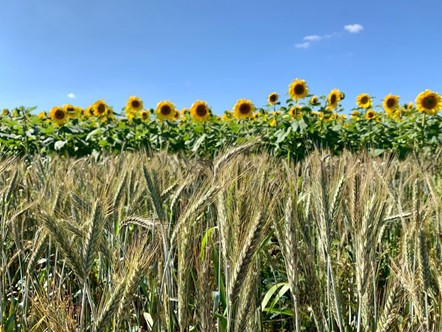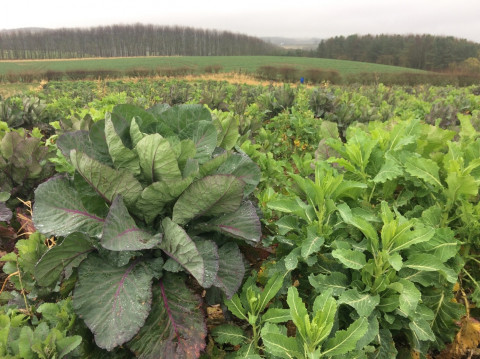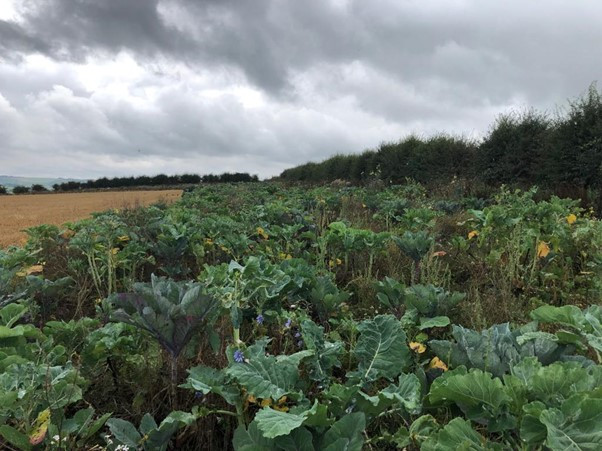Working with AB9 and spring-sown bird seed plots this season
In a blog published earlier this week my colleague and senior Kings technical advisor, Meehal Grint shared some useful advice on ground and plot management for game cover and wild bird seed crops, as well as new difficulties brought on by the recent bird flu outbreak.
While out on visits to farms and estates, an area we've seen particular interest is the correct establishment of AB9s and similar alternatives.
AB9 is the winter bird food option within Countryside Stewardship and this year's cold end to March and the start of April highlighted an even greater need for these plots. Many growers reported strong feeding activity on AB12 sites well into April (towards the end of the hungry gap), so supplying further cover and natural feed for farmland birds via AB9 is especially important this season. Of course, as with any crop, proper planning goes a long way for ensuring good performance.
Some tips when it comes to establishment
There are a few factors to consider when it comes to establishing your AB9 or game cover crop. Weather, seedbed condition, weed management, timing and type of mixture all have an influence on the outcome.
Weather conditions
With the cold and dry start to the year, the correct establishment of your crop is essential so that no additional cost or effort is incurred when preparing the ground and drilling. I know you're all keen to avoid the dreaded re-drill and need for a 'rescue' mix!
The ideal timing for drilling is when soil temperatures increase up to and past the magic 10⁰C this month. The dry weather we're experiencing can work in your favour by helping to create a stale seedbed ahead of drilling.
Seedbed condition and weed management
The creation of a stale seedbed is sometimes an overlooked area of AB9 establishment and often not enough time is allowed for weeds to fully flush. If possible, you should try to leave at least a month between cultivation and drilling as this gives enough time for a good blanket of the 'undesirables' to show themselves so you can tackle them. If you find that the weeds aren't growing with vigour in this space of time, this is a sign that your AB9/game crops likely do not want to be in the ground either. Even with a stale seedbed, you should still consider spraying off any weeds that germinate rather than cultivating them in. This is especially important with docks, thistles and nettles.
If it's possible, you may want to consider moving the crop into fresh ground every few years and bringing the area previously used for it back into the farming rotation. The benefits are that your AB9 can then thrive in new soil and the harder-to-control weed species can be prevented from establishing, or knocked back if needed.
If this isn't an option for the area you're working on – e.g. it's a fixed game crop site - there may be alternatives you can consider. Organic matter, such as farm manure or chicken muck, will be essential for a fixed plot to annually thrive and produce the results required. You should weigh up the cost and efforts of introducing organic matter as part of the crop's annual establishment against the expenses you may endure should the crop fail.
For the areas of AB9 that are repeatedly producing poor results and which cannot be moved, I suggest considering AB8: flower-rich margins and plots. AB8 mixtures only need to be sown once and work well with low nitrogen soil types while still putting the land into good use to support pollinators and beneficials. Just like AB9, it's a CS option so you will still have an additional source of revenue.
Mixture choice
When thinking about mixtures, bear in mind that there are financial benefits associated with establishing a successful kale-based mix. Kings provide the Moir Mix, which works well as a first rotation and lasts for two years on one years' worth of establishment costs. I'd then recommend using a one-year option to fill the break year with, such as Campaign Mix South which supports a rotational weed control programme. It's important to effectively control and prevent weeds, as well as the risk of diseases like club root.
Timing
Misjudged or poor establishment methods will unsurprisingly lead to disappointing results so a 'hold off' approach is often best. Be brave and wait for the right temperature and soil moisture; both of which will come! Crops that are drilled and able to hit the ground running will perform better than those left lingering in cold seedbeds waiting for conditions to improve. The most important thing is to not force cultivations or drilling. Waiting an extra day for conditions to improve can result in a much better outcome.
Looking after your soil
The extreme rises in the cost of nitrogen production won't come as a surprise by now and with the ever-increasing understanding and importance of soil improvement methods, more farmers and land managers are looking for solutions. For many, there is particular interest in how to better support soil microbes and capture nitrogen that would otherwise be lost.
A risk with some game crop areas is that they may have poor soil quality after years of repetitive maize drilling and/or a lack of organic matter. A forced break within operations allows this cycle to be broken and gives space for a more permanent game crop to be established. Perennial species like chicory, canary grass or artichokes all make fantastic options for wind breaks and hedges around plots.
A greening crop like our Annual Pollen and Nectar Mix can help to improve the quality of soils for unused areas in 2022. Mixes like this also bring a great benefit to pollinators within the landscape.
Soil left bare will leak health and nutrients and will also be in a much worse condition if left without the structure of living roots within it. On the other hand, if weeds are left untreated they'll grow and provide a basic root structure. While this can offer some help, if left too long they can start to seed which will cause problems in the future. Likewise, they won't create the even soil improvements that the likes of a living mulch crop can achieve so are really only a short-term fix.
Finally, don't overlook soil sampling within AB9 and game crops, especially with long-term sites. It's worth seeking advice from your agronomist and finding out exactly what your soil requires. A sample is particularly helpful when it comes to knowing the pH and nutrients available in your soil and helps you to plan for your crops well ahead.
Countryside Stewardship – consider other options too
As Meehal also said in his blog (and given the attractive payment increases for all options), it would be sensible to look carefully at your farm and/or shoot and consider the ways that other Countryside Stewardship (CS) options could make use of otherwise unproductive land. Getting to grips with the scheme now and over the next few years is useful practice and a good stepping-stone into the Environmental Land Management (ELM) scheme when it becomes available.
Replacing traditional maize crops with AB9 and rotating their location within larger plots will create a more diverse landscape for wildlife too, helping to improve soils and reduce the frustrations associated with poor or failing crops. All of this is favourable with game crops and could be covered with a payment scheme – it's almost a no-brainer!
For more advice on Countryside Stewardship schemes and how to best manage and establish AB9, please speak to your Kings advisor or contact the team. You can also subscribe to our blog to be notified of future posts from our advisors.
As a subscriber, you’ll receive email alerts each time a new blog is published so you can always stay updated with the latest advice and insights from our experts






Comments